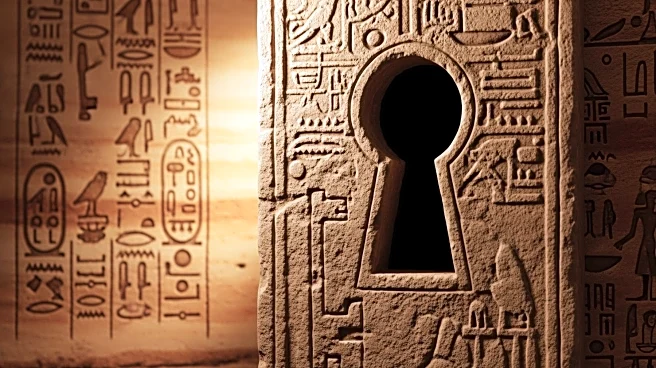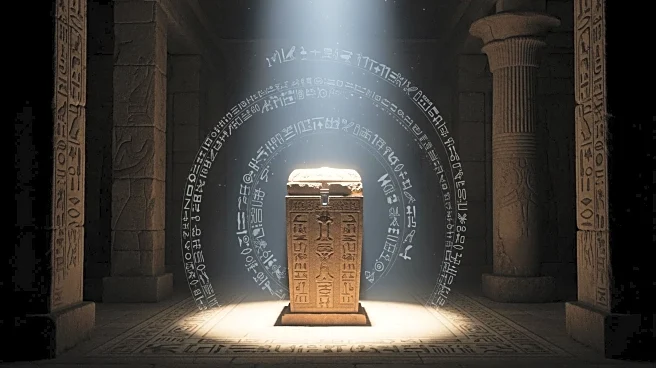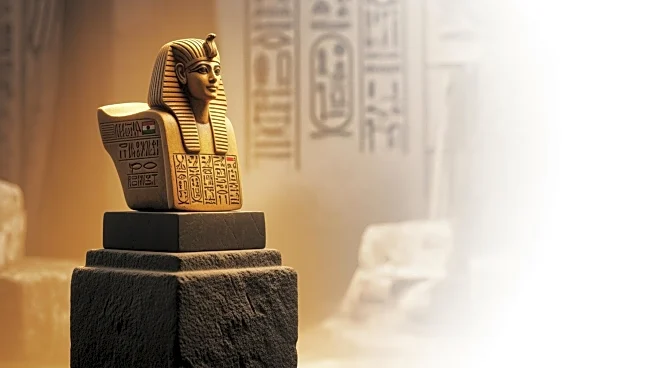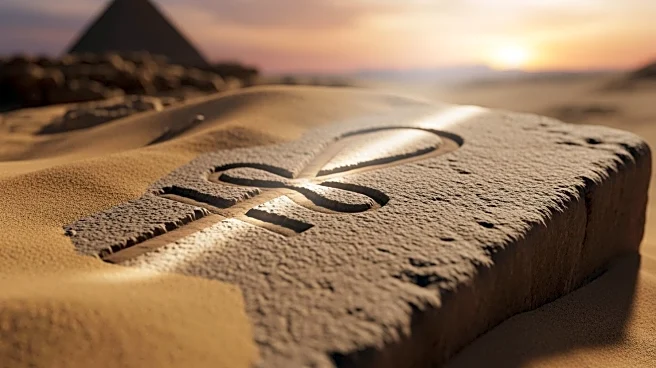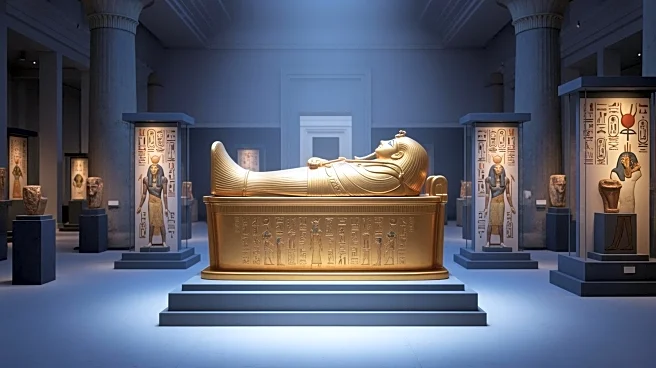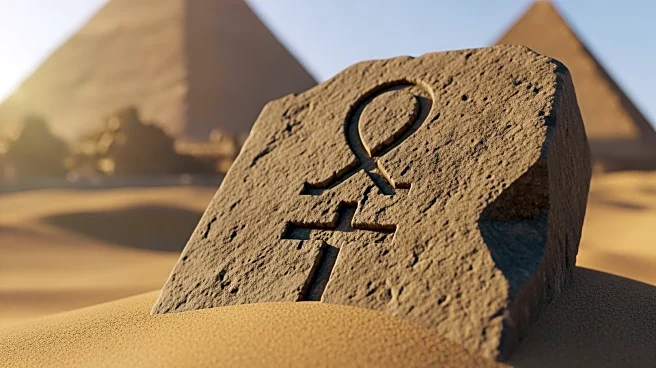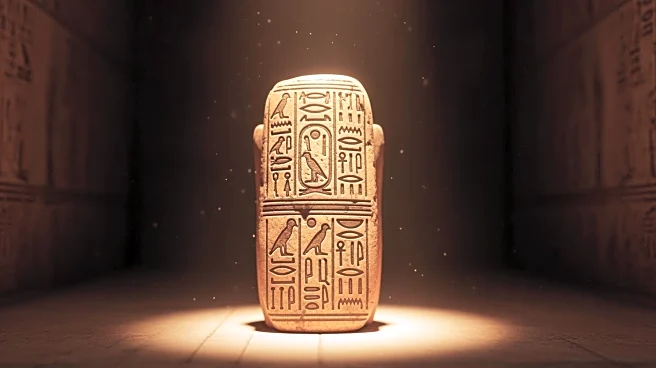What's Happening?
Researchers have discovered two hidden cavities behind the eastern face of the Pyramid of Menkaure, one of the three main pyramids at Giza. This marks the first time structural anomalies have been detected
on the pyramid's eastern side, where a smooth granite surface has long puzzled archaeologists. The Pyramid of Menkaure, built during Egypt's Fourth Dynasty, served as the tomb of Pharaoh Menkaure. This discovery follows a 2023 finding of a hidden corridor inside the Great Pyramid of Giza, built for Pharaoh Khufu. The latest discovery adds to the growing evidence that the Giza complex still holds untold secrets more than 4,000 years after its construction.
Why It's Important?
The discovery of hidden cavities in the Pyramid of Menkaure is significant as it contributes to the understanding of ancient Egyptian architecture and burial practices. These findings could provide new insights into the construction techniques and cultural practices of the time. For archaeologists and historians, such discoveries are crucial in piecing together the historical narrative of ancient Egypt. The potential to uncover more secrets within the Giza complex could lead to a deeper understanding of the civilization's technological advancements and societal structures.
